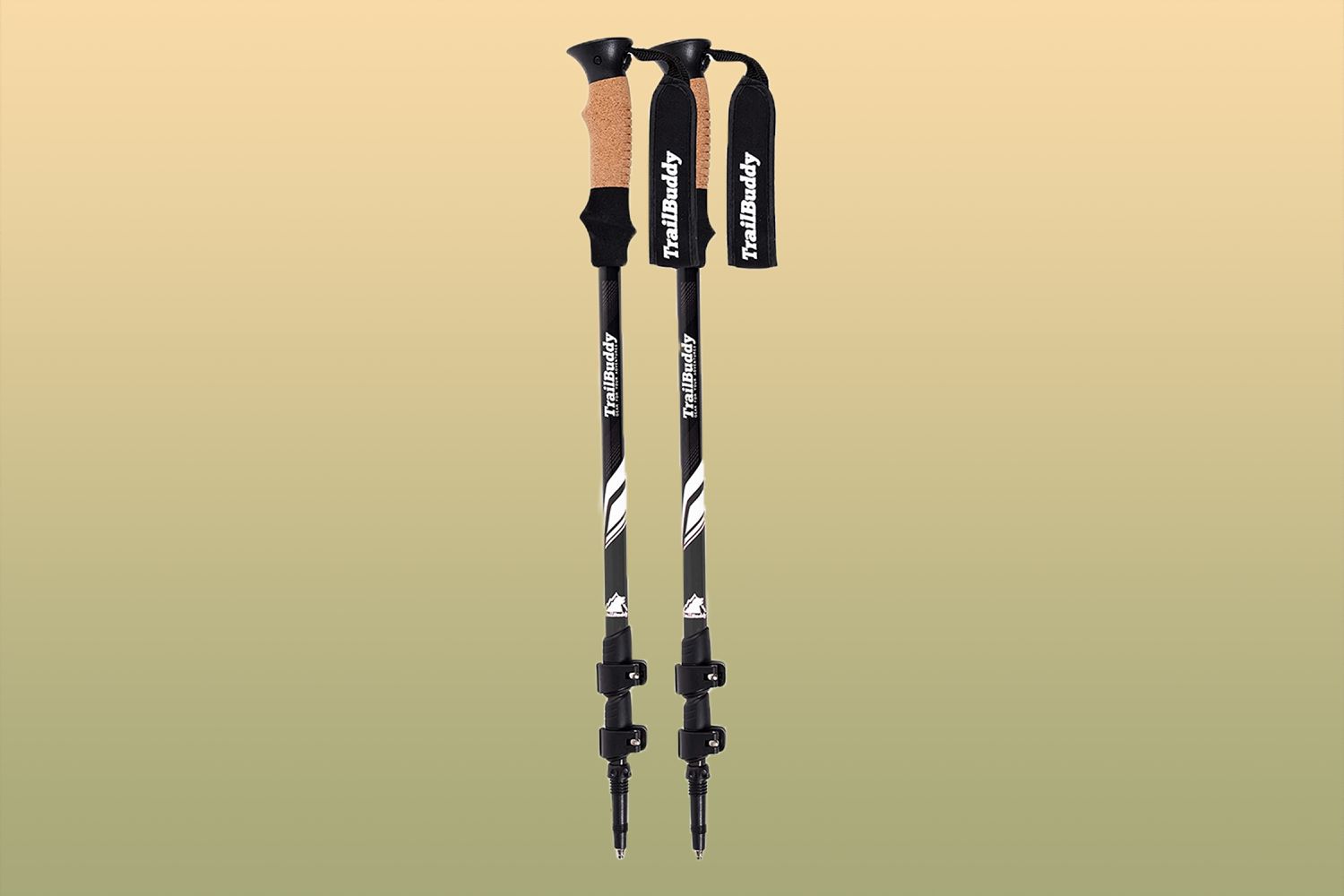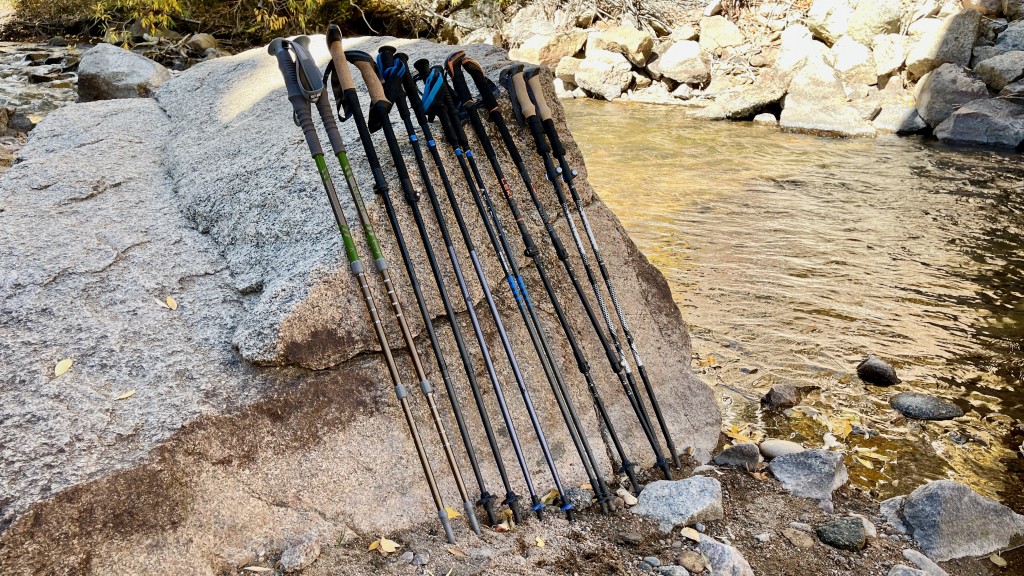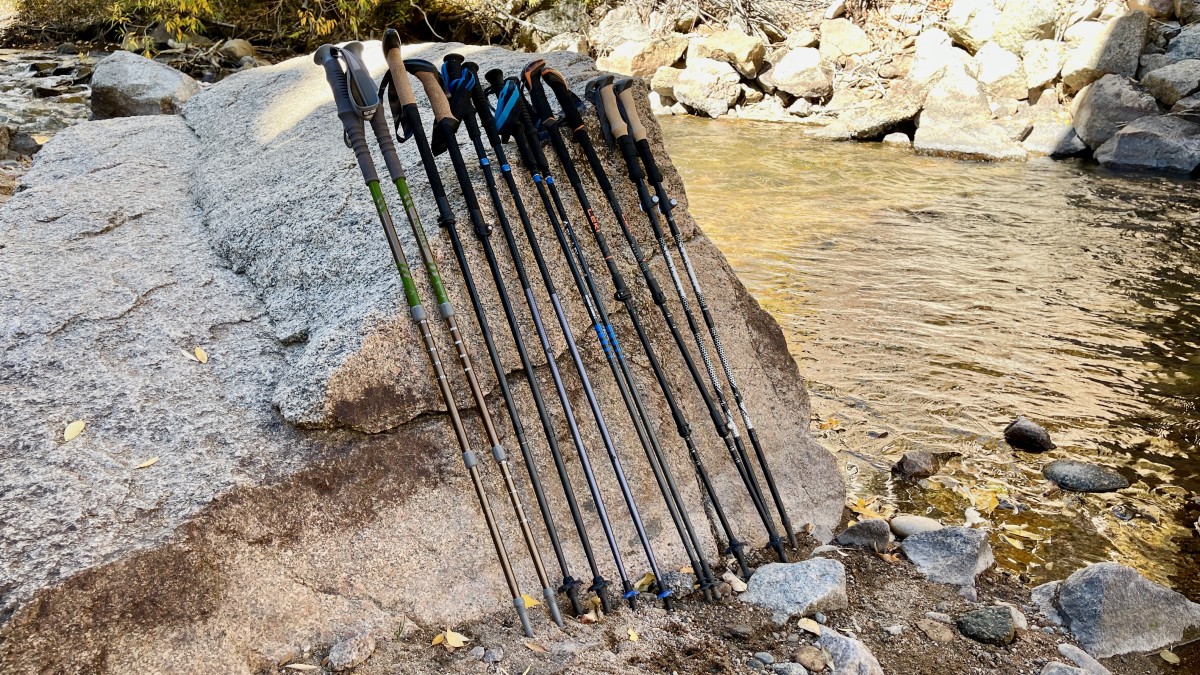Trekking poles improve stability, reduce strain, increase speed, enhance endurance, provide balance, enhance posture, lessen impact, offer support, and boost safety in hiking. When hitting the trails, the utilization of trekking poles can significantly improve your hiking experience.
Apart from stability and balance, trekking poles reduce strain on your joints and muscles, allowing you to hike longer and more comfortably. These essential accessories also help in navigating uneven terrains and provide support when crossing streams or climbing steep slopes.
Additionally, incorporating trekking poles in your outdoor adventures can help prevent injuries and enhance your overall hiking performance.


Credit: www.outdoorgearlab.com
Preventing Injuries
Using trekking poles can significantly prevent injuries during your hiking adventures.
Improving Stability
Trekking poles enhance balance and help you navigate challenging terrains with confidence.
Reducing Impact On Joints
By distributing weight evenly, trekking poles minimize stress on your knees and ankles.
Improving Endurance
Improving endurance can greatly benefit your trekking experience.
Alleviating Weight On Lower Body
- Reduces strain on knees, ankles, and hips.
- Keeps you fresh for longer distances.
Enhancing Upper Body Workout
- Engages arms, shoulders, and core muscles.
- Provides a full-body workout while hiking.
Using trekking poles can maximize your stamina and allow you to conquer challenging terrains effortlessly.
Enhancing Balance
Enhancing balance is one of the key benefits of using trekking poles during your outdoor adventures. The poles provide additional points of contact with the ground, helping to distribute your body weight more evenly and maintain stability, especially on challenging terrain. Here are some specific scenarios where trekking poles can significantly enhance your sense of balance:
Navigating Uneven Terrain
When tackling uneven terrain, such as rocky paths or steep slopes, trekking poles can offer crucial support. They provide stability on potentially unstable ground, reducing the risk of slipping or losing your footing. As a result, you can confidently navigate through rugged landscapes with reduced risk of falls or trips, enhancing your overall hiking experience.
Crossing Streams Or Rivers
For stream or river crossings, trekking poles serve as invaluable aids for maintaining balance and stability. By using the poles to test the depth and stability of the water and streambed, you can confidently navigate across challenging water obstacles. The added support from the poles can help prevent slips and ensure a safer passage, allowing you to explore new areas without hesitation.
:max_bytes(150000):strip_icc()/the-best-hydration-packs-for-skiing-hiking-and-more-tout-776777eb9a1847698cacec62e3973b37.jpg)
Credit: www.travelandleisure.com
Ascending Elevation
Discover the top 9 benefits of using trekking poles for ascending elevation. Enhance stability, reduce strain on joints, and improve balance while hiking. Trekking poles also provide additional support on challenging terrains, reduce fatigue, and increase speed and endurance.
Aiding In Uphill Climbs
Ascending elevation during a trek can be demanding and physically challenging. Trekking poles play a crucial role in supporting your body weight and providing stability as you make your way uphill. With each step, the poles act as an extension of your arms, reducing the strain on your legs and joints. They offer an additional point of contact with the ground, providing balance and preventing slips or falls. The ergonomic handles of trekking poles offer a comfortable grip, ensuring that you maintain a firm hold even on rough terrains. By evenly distributing the weight, these poles help you maintain a steady and controlled pace, making uphill climbs more manageable.Boosting Efficiency
Using trekking poles can significantly boost your efficiency during uphill climbs. These poles allow you to engage your upper body muscles, effectively sharing the workload with your legs. As you push against the poles, your arms and shoulders provide additional power, propelling you forward with every step. This coordinated effort distributes the exertion across your entire body, reducing fatigue and making your ascent more efficient. The poles also increase your stride length and provide stability, allowing you to move with confidence and speed. By absorbing some of the impact on your joints, trekking poles reduce the strain on your knees and ankles, enabling you to maintain a consistent pace without sacrificing comfort. With the use of trekking poles, you’ll find yourself conquering uphill climbs with greater ease and less effort.In Summary
To summarize, trekking poles come with a multitude of benefits when it comes to ascending elevation during your trek. Not only do they aid in uphill climbs by providing stability and support, but they also boost efficiency by distributing the workload across your entire body. By using trekking poles, you can conquer challenging terrains with greater ease and minimize the physical strain on your legs and joints. So, don’t forget to bring your trusty trekking poles on your next adventure – they’ll be your invaluable companions on the journey to new heights.Descending Elevation
When it comes to hiking, the descent can often be just as challenging, if not more so, than the ascent. As you traverse steep slopes and uneven terrain, the risk of losing your footing and injuring yourself increases significantly. This is where trekking poles can play a vital role, offering numerous benefits that will enhance your hiking experience. In this section, we will explore two key reasons why you should consider using trekking poles during your descents: providing support and control and protecting your knees and ankles.
Providing Support And Control
Trekking poles act as an additional set of limbs, providing you with much-needed support and control during your descent. With each step, the poles help distribute your body weight across all four points of contact, reducing the strain on your legs and providing stability. This extra support allows you to feel more balanced and confident on steep downhill sections, minimizing the risk of slips and falls.
Trekking poles are also valuable in tricky situations where you might need to navigate through rocky or loose terrain. By planting the poles firmly into the ground, you create anchors that give you the leverage to maneuver your body safely. The poles act as stabilizers, allowing you to lean on them for balance and reducing the strain on your leg muscles. With this added support and control, you can descend with comfort and ease.
Protecting Knees And Ankles
One of the major benefits of using trekking poles while descending is the significant reduction in stress on your knees and ankles. As you hike downhill, the impact forces on these joints can be intense, leading to discomfort, pain, and even long-term damage. Trekking poles help alleviate this pressure by absorbing a portion of the shock and diverting it away from your lower body.
The poles act as shock absorbers, transferring the impact to your arms and shoulders, which are better equipped to handle the load. By using your upper body in conjunction with your legs, you create a more evenly distributed force, reducing the strain on your knees and ankles. This makes trekking poles particularly beneficial for individuals with weak or unstable joints, as well as those recovering from injury.
Additionally, trekking poles can provide stability on uneven surfaces, such as loose scree or slippery rocks, helping to prevent twisted ankles and sprained joints. By planting the poles on either side of you, you create a wider base of support, improving your balance and reducing the risk of missteps. This added protection for your knees and ankles ensures a safer and more enjoyable hiking experience.

Credit: www.outdoorgearlab.com
Frequently Asked Questions On 9 Reasons Why You Should Use Trekking Poles
Can Trekking Poles Help To Reduce Knee Pain?
Using trekking poles can help distribute weight off your knees and provide stability, which can reduce knee pain and prevent injuries while hiking.
Are Trekking Poles Necessary For Beginners?
Trekking poles are not necessary for beginners, but they can provide numerous benefits such as added stability, reduced fatigue, and improved balance, making hiking easier and more enjoyable.
How Do Trekking Poles Improve Hiking Efficiency?
Trekking poles help improve hiking efficiency by increasing your stability, reducing the strain on your lower body, improving posture, and providing additional support and balance on rough terrain. This allows you to hike longer distances with less effort.
Conclusion
Trekking poles offer numerous benefits for hikers, from improved stability to reduced joint strain. By distributing weight and providing support, they can enhance your outdoor experience. As a versatile tool, trekking poles are essential for challenging terrain and long-distance hikes.
Their multifunctionality makes them a valuable addition to any adventurer’s gear.